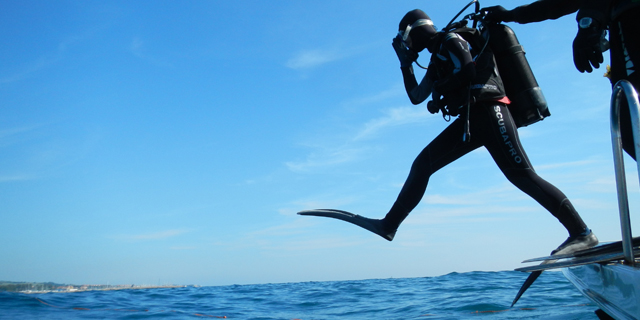
Everyoneisawarethat regulaor prpeller polishing is beneficial for ships as it allowsbetterfuelefficiency and ensures a standard maintenance programme to most ofthevessels
typically for six to twelve months. There are numerous factors likemarinepollution,the material of the propeller, deposition of calciumcarbonate,corrosionof the metal,hydrodynamic cavitation and mechanicaldamagethatresults in the roughness of thepropeller.
The ship requires frequent polishing of the propeller because the rough propellerincreasestheconsumption of fuel in high proportion. As proved, a propellerwithasmaller surface result in loss of energy gain, half of which theship’shullcreates. The repairing cost of the propeller is relatively muchsmaller than the repairing cost of the hull. Therefore, propeller maintenanceisaquick and simple process with a high return investment.
Polishingofthe propeller can be done underwater or over the dry dock. It is essentialforthe
shipowner to know when is the best time to polish their propeller. Forabetter
result of polishing, it is necessary to know which option is better -underwaterpolishing
propeller or polishing propeller over the dry dock.Although,the decision is often made topolish the propeller when the vessel isindrydock. Let’s study what is the difference?
Under-waterpolishing
Underwaterpropellerpolishing promises some notable advantages such as enhancing the
vessel’sperformance, decreasing the consumption of fuel, lessening the emissionofgases in the marine environment, rising the vessel’s speed, reducing theannoyingvibrations,increasing its reliability and expanding the vessel’smaintenancecycles.Anaverage surface finish of 1 micron or better (Rupert Grade A) is delivered whenapropeller ismaintained and polished underwater. Due to the rotation of thepolishingpad, it creates a centrifugal suction of up to 120 kg/cm2, that holdsthepolishing pad 100 per cent flush to the propeller bladesurface a very finefinishis possible. Due to the presence of water, the necessary cooling of thesurfacethe finish is achieved which results in a much finer finish than that canbeachieved in a dry environment. Therefore, underwater polishing ensures finerfinishing.
It makes the process easier by providing the necessary cooling forbetterfinishing.
Drydock polishing
Whena standard polishing in a dry dock is done, the best result is a surface finishof three to four microns (Rupert Grade B). A dry dock polish is expensive.Getting access to the propeller is the first thing. It requires scaffoldingsince the technician needs to reach the entire propeller. Comparatively, drydock polishing on average costs 50 per cent more thanunderwater polishing.Since the technician requires centrifugal suction, the final quality ofdrydock polishing wholly depends upon the skill set of the technician executingthe work.Dry dock polishing leaves “banana-shaped” marks on the blade surfaceafter polishing as the polishing tool is pushed to the blade surface at anangle.
In-wateror Dry dock?
In-waterpolishing not only offers finer surfaces and lower costs, but also ensures
additional benefits if planned smartly. Underwater polishing permits the vessel
owner to monitor faults while their vessel is still in service. Report on
condition of paint, anodes, rope guard and the rubber can be made by divers
while the ship is still in service since it will preventfuture expenses.
Early intervention allows savings. Underwater propeller polishing presents
extra benefits comparing to dry dock polishing. In-water polishing saves both
cost and docking time as it require 1-2 working hours, while the ship is
at the berth. Underwater polishing is a faster process that makes a lasting and
better result due to the presence of natural lubrication of the liquid element.
It is obvious the often the ship’s is cleaned and polished, the more money is
saved due to the reduction of the consumption of fuel. Therefore, the
underwater polishing cost gets outweighed and brings profit and even greater
economic benefits.
Conclusion
Thearticles discuss underwater propeller polishing and dry-dock propellerpolishing. It also mentions the difference between them and highlights which process is a better option.










































